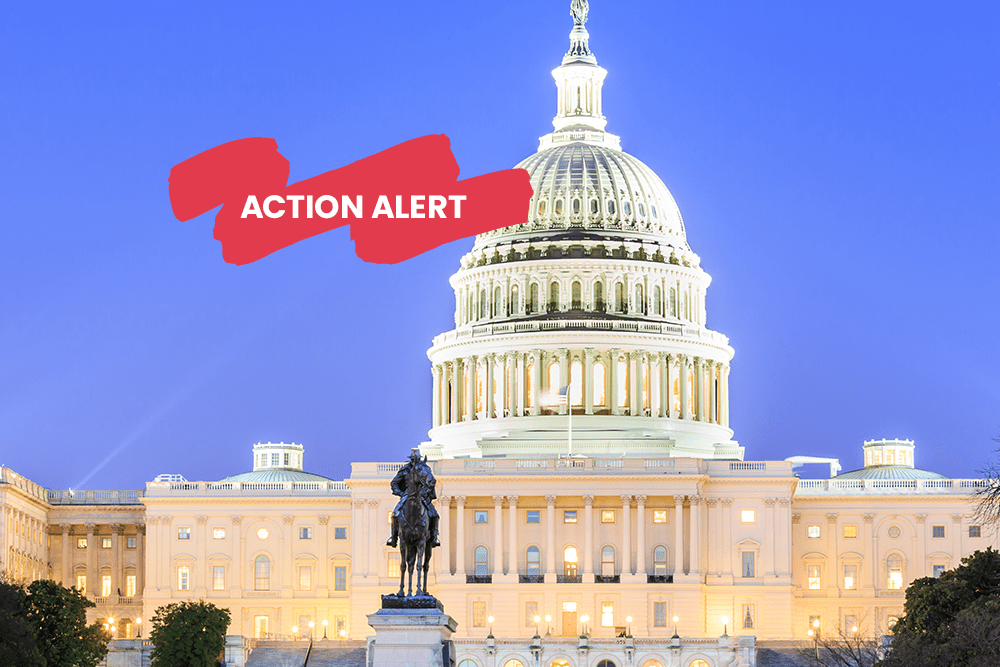Advocacy
Clean Air
AAFA supports clean, safe air for everyone and urges the adoption of strong standards and enforcement of these standards to reduce the emission of harmful air pollutants that impact climate change. The quality of the environment around us has a direct impact on our health and the health of future generations. We have an obligation to protect the climate and preserve clean air for the health and well-being of all people in the U.S., especially those with asthma and allergies.
Outdoor Air Pollution
Ozone is one of the most widespread air pollutants and is the main component of smog or “haze.” Increased ozone concentration is directly related to asthma attacks and can reduce lung function. It is most found in cities with more cars and on high heat days.
Airborne particle pollution is also a significant risk factor for asthma. Airborne particles pass through the nose or mouth directly into the lungs. Fine (very small) particle pollution comes from many sources, including agricultural and wildfire smoke, as well as the burning of fossil fuels in factories, power plants, and vehicles. Particle pollution reduces lung function and can worsen asthma. Increased short-term particle pollution exposure also leads to increased hospitalizations and severity of asthma attacks in children.
Indoor Air Pollution
Indoor air pollution poses a significant health risk to people. People spend an average of 90% of their time indoors and, according to the Environmental Protection Agency (EPA), indoor air is more polluted than outside air. Evidence also shows that poor indoor air quality (IAQ) increases risks of severe asthma attacks and allergic reactions.1
IAQ in schools is especially important. IAQ in schools can impact children’s health and how well they perform in school. In the United States, more than 53 million children and 6 million adults spend a large part of their days in more than 120,000 public and private schools.
Some of the most common allergens found in schools are dust mites, pests, and mold. These can trigger asthma symptoms in people with allergic asthma. Asthma is the leading cause of missed school days.
The aging infrastructure of our public school system is one of the top causes of poor IAQ in schools. In 2017, the American Society of Civil Engineers (ASCE) gave U.S. public schools a D+ on its Infrastructure Report Card. Annual funding to keep up school buildings falls about $38 billion short. The report card notes that 53% of the nearly 100,000 public school buildings need repairs, renovations, and modernizations just to be considered in “good” condition School districts with more low-income and minority children are more likely to report their school buildings as being in “poor” or “fair” condition.2
Support the Environmental Protection Agency (EPA)
AAFA is dedicated to ensuring that all individuals have an optimal environment in which to live, learn, work and play. EPA is the cornerstone of our environmental public health infrastructure, and its mission to protect the public’s health and the environment is critical to the well-being of our country. Strong environmental laws and enforcement of these laws are needed to ensure EPA’s mission is achieved.
AAFA strongly supports the inclusion of environmental justice and civil rights as strategic goals for the Environmental Protection Agency (EPA).3 In addition, AAFA supports a number of EPA’s priorities, including:
- Reducing emissions that cause climate change: AAFA supports the target for the United States to achieve a 50-52% reduction from 2005 levels in economy-wide net greenhouse gas pollution in 2030.4 As part of this effort, EPA must continue to drive to a nationwide transition to zero-emission transportation. By slashing greenhouse gas emissions from the transportation and power sectors and the natural gas industry, the nation can provide immediate health benefits by cutting harmful air pollutants at the same time. Specifically, AAFA supports EPA’s efforts to regulate and enforce greenhouse gas emission standards for light, medium and heavy-duty trucks; additional multi-pollutant truck standards; and greenhouse gas limits for new and existing power plants and oil and gas facilities.
- Strengthening National Ambient Air Quality Standards (NAAQS): AAFA views the National Ambient Air Quality Standards (NAAQS) as key to protecting health, addressing climate change and improving environmental justice. Strong, updated standards for ozone and particulate matter that accurately reflect the current science are critical to driving cleanup of polluting sources, including in overburdened communities. AAFA supports health protective PM2.5 and Ozone standards.
- Reducing Exposure to Radiation and Improve Indoor Air Quality: Indoor air quality in homes, schools and workplaces is a significant factor in the overall health and wellbeing of the population. The lack of funding mechanisms to pay for radon and indoor air mitigations is an ongoing problem. EPA should provide funding for these efforts and increase its investment in research to support program goals in this area.
EPA cannot adequately address these priorities without sufficient funding. AAFA supports robust funding for EPA to expand its role in protecting the environment. AAFA believes that there is an urgent need for EPA to receive annual appropriations that will help it rebuild and restore its historic role of protecting our environment through strong regulation and enforcement.
References
1. U.S. Environmental Protection Agency (2015). Why indoor air quality is important to schools. https://www.epa.gov/iaq-schools/why-indoor-air-quality-important-schools
2. BuildUSschools.org. (2018, September). Education Equity Requires Modern School Facilities. Retrieved August 15, 2019.
3. Letter to EPA Administrator Michael Regan, November 12, 2021, available at https://www.aafa.org/media/3224/aafa-comment-letter-epa-strategic-plan-fy-2022-2026.pdf
4. Fact Sheet, President Biden Sets 2030 Greenhouse Gas Pollution Reduction Target Aimed at Creating Good-Paying Union Jobs and Securing U.S. Leadership on Clean Energy Technologies











